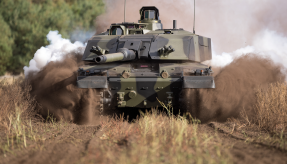
The Defence Science and Technology Laboratory (Dstl) has successfully trialled advanced electromagnetic (EM) technology, heralding the next generation of capabilities for both offensive and defensive operations in modern warfare.
Electromagnetic Dominance: The new battlefield
In the era of invisible war, supremacy in the electromagnetic spectrum is as vital as dominance in traditional combat domains. The ability to degrade or defeat adversary command and control systems offers a decisive strategic edge.
Dstl’s ‘Spectral Prophet’ trial demonstrated prototype EM capabilities, including advanced deception and countermeasure technologies. The trial marked a significant step forward in integrating previously separate disciplines, creating innovative approaches to command and control (C2) in complex, contested environments.
By combining data from multiple sensors and effectors, the Spectral Prophet initiative allows for automated processes that provide commanders with enhanced situational awareness and operational decision-making capabilities.
Innovation and Collaboration
The programme also showcased the benefits of distributed C2 infrastructure, enabling the sharing of data, tasking, and status updates across networks of existing and new radio frequency (RF) transceivers.
Chris, a Dstl technology lead, said: “We are building the technology that allows information to get to where it needs to in near real time while filtering out what isn’t required.”
Jon, the Spectral Prophet technical lead, highlighted the importance of sustained investment in EM research: “This trial builds on years of research funded by the Ministry of Defence Chief Scientific Adviser. Initiatives like our university-based EM Hub are vital for developing UK expertise and supporting the government’s growth agenda.”
Supporting the defence ecosystem
Spectral Prophet was supported by a broad coalition of prime contractors, SMEs, and academic partners. Investment in EM research not only advances UK defence capabilities but also sustains highly skilled jobs, aligning with the government’s Plan for Growth.
The trial’s outcomes will inform decisions for the Strategic Defence and Security Review and highlight pathways to rapidly integrate new capabilities into the UK’s armed forces. This focus on conceptual architectures and experimental technologies will reduce procurement risks and ensure better value for taxpayers.
A new frontier for defence suppliers
As Dstl and its partners pave the way for the future of invisible war, defence suppliers are encouraged to engage with emerging EM technologies that promise to reshape the battlefield. With UK industry playing a central role in these advancements, the sector is poised to benefit from increased investment, job creation, and strategic opportunities.
For defence suppliers, this breakthrough offers not just a glimpse of the future but also a chance to help shape it.
If you would like to join our community and read more articles like this then please click here
Dstl electromagnetic Innovation Spectral Prophet supply chain








